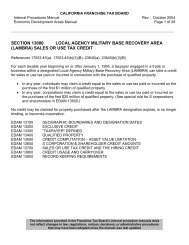
Turn your PDF publications into a flip-book with our unique Google optimized e-Paper software.

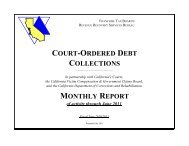
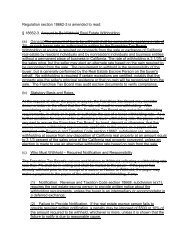
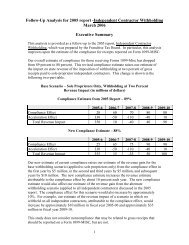
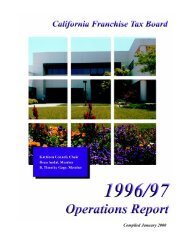
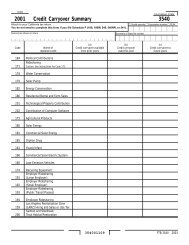
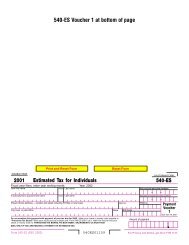
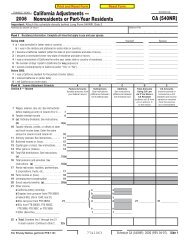
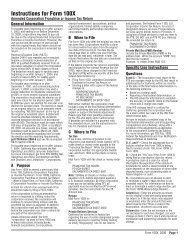
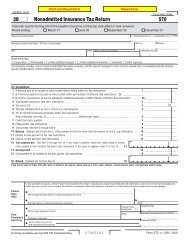
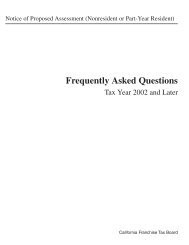
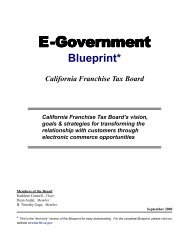 Government Blueprint Text Only Document - California Franchise . " width="208" height="300" />
Government Blueprint Text Only Document - California Franchise . " width="208" height="300" />
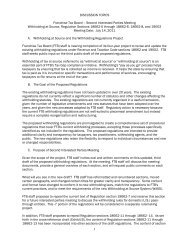
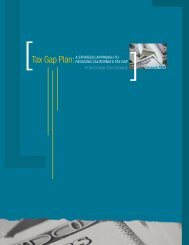
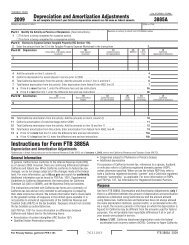
Instructions for Schedule P (540) Alternative Minimum Tax and Credit Limitations — Residents References in these instructions are to the Internal Revenue Code (IRC) as of January 1, 2005, and to the California Revenue and Taxation Code (R&TC). What’s New Tax Increase – Beginning on January 1, 2009, the regular and alternative minimum tax rate increased by 0.25%. Natural Heritage Preservation Credit – The funding for the Natural Heritage Preservation Credit is available beginning January 1, 2010, until June 30, 2015. Currently there is no funding available to award or claim credits for the period from July 1, 2008, to December 31, 2009. However, carryover is not affected for previously awarded credits. New Home Credit – For taxable years beginning on or after March 1, 2009, and before March 1, 2010, a home credit against net tax will be allowed for the purchase of a never been occupied home in an amount equal to the lesser of 5% of the purchase price of a qualified principal residence or ten thousand dollars ($10,000). For more information go to ftb.ca.gov and search for home credit or get FTB Pub. 3528, New Home Credit. New Jobs Credit – For taxable years beginning on or after January 1, 2009, a new jobs credit will be allowed to qualified employers in the amount of $3,000 for each qualified full-time employee hired during the taxable year. For more information go to ftb.ca.gov and search for new jobs or get FTB 3527, New Jobs Credit. Farmworker Housing Credit – For taxable years beginning on or after January 1, 2009, the farmworker housing credit has been consolidated into the low-income housing tax credit. For more information, get form FTB 3521, Low-Income Housing Credit. General Information In general, California law conforms to the Internal Revenue Code (IRC) as of January 2005. However, there are continuing differences between California and federal law. When California conforms to federal tax law changes, we do not always adopt all of the changes made at the federal level. For more information, go to ftb.ca.gov and search for conformity. Additional information can be found in FTB Pub. 1001, Supplemental Guidelines to California Adjustments, the instructions for California Schedule CA (540 or 540NR), and the Business Entity tax booklets. The instructions provided with California tax forms are a summary of California tax law and are only intended to aid taxpayers in preparing their state income tax returns. We include information that is most useful to the greatest number of taxpayers in the limited space available. It is not possible to include all requirements of the California Revenue and Taxation Code (R&TC) in the tax booklets. Taxpayers should not consider the tax booklets as authoritative law. Specific differences between California and federal law are noted in the instructions under the applicable line items. Registered Domestic Partners (RDP) RDPs under California law must file their California income tax returns using either the married/RDP filing jointly or married/RDP filing separately filing status. RDPs have the same legal benefits, protections, and responsibilities as married couples unless otherwise specified. If you entered into a same sex legal union in another state, other than a marriage, and that union has been determined to be substantially equivalent to a California registered domestic partnership, you are required to file a California income tax return using either the married/RDP filing jointly or married/RDP filing separately filing status. For more information on what states have legal unions that are considered substantially equivalent, go to ftb.ca.gov and search for attorney general. For purposes of California income tax, references to a spouse, husband, or wife also refer to a California registered domestic partner (RDP), unless otherwise specified. When we use the initials (RDP) they refer to both a California registered domestic “partner” and a California registered domestic “partnership,” as applicable. For more information on RDPs, get FTB Pub. 737, Tax Information for Registered Domestic Partners. Net Operating Loss For taxable years beginning in 2008 and 2009, California suspended the net operating loss (NOL) carryover deduction. Taxpayers may continue to compute and carryover an NOL during the suspension period. However, taxpayers with net business income of less than $500,000 or with disaster loss carryovers are not affected by the NOL suspension rules. For more information, see form FTB 3805V, Net Operating Loss (NOL) Computation and NOL and Disaster Loss Limitations – Individuals, Estates and Trusts. Business Tax Credit Limitation For taxable years beginning on or after January 1, 2008, and before January 1, 2010, there is a limitation on the application of business tax credits for taxpayers whose net business income is $500,000 or more. The limitation is equal to 50% of the net tax before the application of any credits. Rice Straw Credit For taxable years beginning on or after January 1, 2008, the Rice Straw Credit has expired. Unused carryover credits are taken on form FTB 3540, Credit Carryover Summary. Teacher Retention Credit For taxable years beginning on or after January 1, 2007, the Teacher Retention Credit has been repealed. Military Personnel Servicemembers domiciled outside of California, and their spouses/RDPs, may exclude the servicemember’s military compensation from gross income when computing the tax rate on nonmilitary income. They may also exclude the spouse’s income from services performed in California if the spouse/RDP has the same residence or domicile as the military servicemember and the spouse is in California to be with the servicemember. Requirements for military servicemembers domiciled in California remain unchanged. Military servicemembers domiciled in California must include their military pay in total income. In addition, they must include their military pay in California source income when stationed in California. However, military pay is not California source income when a servicemember is permanently stationed outside of California. For more information, get FTB Pub. 1032, Tax Information for Military Personnel. Estimated Tax Payments Alternative Minimum Tax (AMT) is required to be included in the computation of the estimated tax payments in order to meet a safe harbor from the underpayment of estimated tax penalty. A Purpose California tax law gives special treatment to some items of income and allows deductions and credits for some items of expense. Many individuals who benefit from these provisions must pay at least a minimum amount of tax and/or limit the amount of their credits. Use Schedule P (540), Alternative Minimum Tax and Credit Limitations — Residents, to determine if: • You owe AMT. • Your credits must be reduced or eliminated entirely. Your credits may be limited even if you do not owe AMT, so be sure to complete Side 1 and Side 2 of Schedule P (540). B Who Must File Complete Schedule P (540) to see if AMT applies to you. Attach it to Form 540 only if any one of the following apply: • You owe AMT. • You have certain credits (such as the credit for child adoption costs, etc.) that are limited by tentative minimum tax (TMT) in Part II, line 24 (or in some cases by AMT, line 26). • The total of Part I, line 7 through line 13 is negative and you would be liable for AMT without taking those lines into account. Schedule P (540) Instructions 2009 Page 1